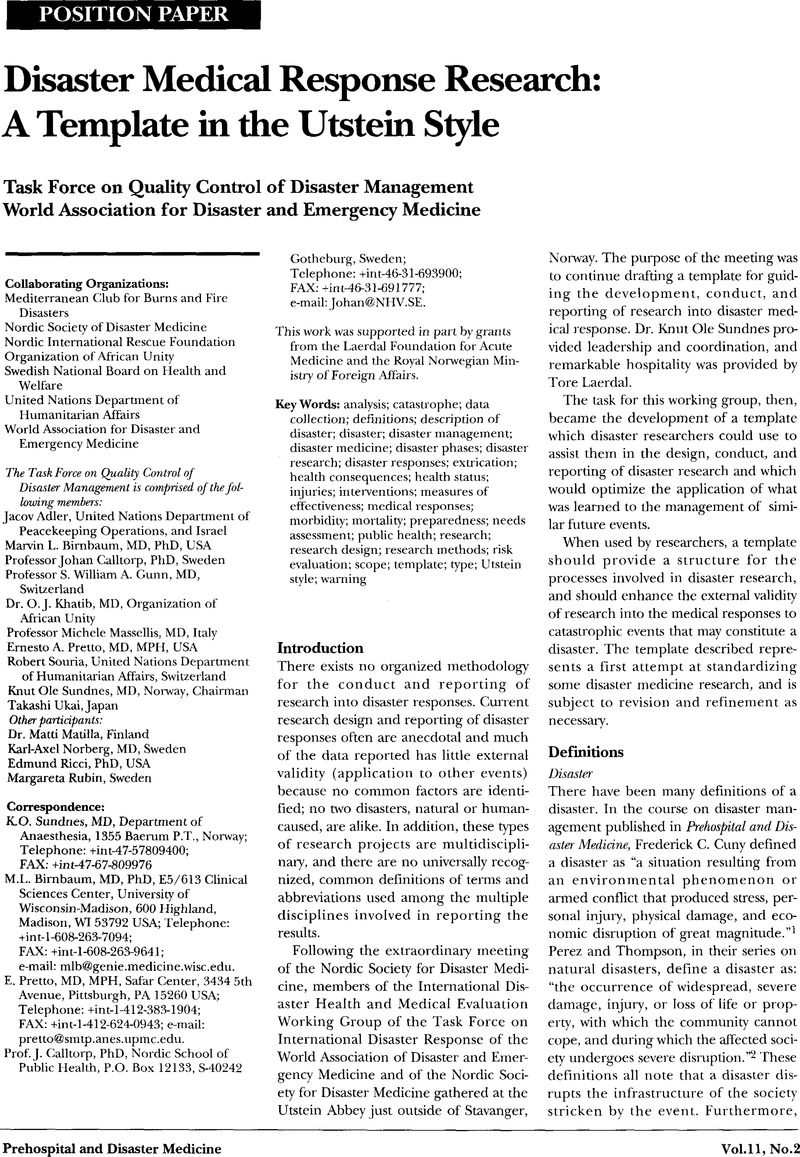Crossref Citations
This article has been cited by the following publications. This list is generated based on data provided by Crossref.
Birnbaum, Marvin L.
1997.
One Giant Step for Humankind.
Prehospital and Disaster Medicine,
Vol. 12,
Issue. 2,
p.
6.
Lagerkvist, Bengt
1998.
Rehabilitation research under fire.
Scandinavian Journal of Social Medicine,
Vol. 26,
Issue. 2,
p.
85.
Cuny, Fred C.
1998.
Principles of Disaster Management Lesson 1: Introduction.
Prehospital and Disaster Medicine,
Vol. 13,
Issue. 1,
p.
80.
Cone, David C.
Jaslow, David S.
and
Brabson, Thomas A.
1999.
Now That We Have the Utstein Style, Are We Using It?.
Academic Emergency Medicine,
Vol. 6,
Issue. 9,
p.
923.
Green, Gary B.
Modi, Surbhi
Lunney, Kevin
and
Thomas, Tamara L.
2003.
Generic evaluation methods for disaster drills in developing countries.
Annals of Emergency Medicine,
Vol. 41,
Issue. 5,
p.
689.
de Boer, Jan
and
Debacker, Michel
2003.
A more rational approach to medical disaster management applied retrospectively to the Enschede fireworks disaster, 13 May 2000.
European Journal of Emergency Medicine,
Vol. 10,
Issue. 2,
p.
117.
Thompson, Cheryl Bagley
and
Schaffer, Judith
2003.
Language Validation of the Air Transport Minimum Data Set: Time-Related Terms.
Air Medical Journal,
Vol. 22,
Issue. 4,
p.
36.





